We’d ditched the drift boat under the shade of a massive willow, and I was walking with Peter through the brush along a froggy side channel of Argentina’s Rio Collon Cura.
Peter, our guide for the day, had pushed the boat up against some soft sand and simply said, “Come with me. I have a feeling.”
It was high fall in northern Patagonia—think of it as a visit to southwest Colorado in October, but without all the people. The willows were brilliantly gold, and the high-desert step glowed with autumn hues under periwinkle skies. Blue ribbons of cold, clear rivers bursting with trout sliced through the arid landscape like pulsing arteries, creating little oases like the one Peter was taking me to.
He slowed his walk, and stayed in the shade as much as he could as we came upon a deep pool shaded by overhanging flora. Then, he stopped altogether. If I hadn’t known, I would have suspected that this hidden stretch of water was not part of the river at all … that it was a peaceful little ox-bow that had been cut off from the main stem of the river by low, late-summer flows. But the dying willow leaves that drifted slowly through the current revealed the pool’s calm, yet active status. This place was fishy.
“He’s right there,” he said to me, pointing to a spot in the dark water where a thick willow branch stretched over the pool. “Can you see him?”
I looked intently. At first, nothing. Then I saw a buttery fin pulsating against the very slow current of the side channel. Then the tail. Then the fist-sized head. This fish—a wary brown—was substantial. But it was substantial for a reason. The trout had staked out the perfect stretch of water—nearly dead-calm, but not so quiet that nothing would drift its way. The pool was as still as glass, but the water moved subtly beneath the brush. This was a stretch of water where either you triumphantly caught the fish or … well, you screwed up and wasted a perfectly good shot at a Southern Hemisphere bruiser that might haunt you for a lifetime.
“Yes,” I replied, sheepishly. And I did, indeed, have eyes on my target. At the same time, I began working on that angler’s algebra, where you take into account certain variables and hopefully arrive at the right conclusion. You must consider your cast that you’ve been executing flawlessly as you’ve stripped big streamers from a drift boat all day only to find yourself now in a situation where accuracy and finesse are vital. And, of course, the other factors, like the subtle flow of the river through the hidden side channel and the overhang of the willows that, given the chance, would grab a miscast hopper and never let it go.
And Peter was my eighth-grade math teacher.
Well, no. Strike that. My eighth-grade math teacher was a knockout, and I attribute my piss-poor arithmetic skills today to the way a sultry 30-something woman unknowingly—and oh-so-gracefully—crafted the quadratic equation on the blackboard with her back to a classroom full of hormone-spiked teen-age boys. I don’t think I learned a damn thing in 1982 … about math, anyway. And I have no idea how my classmates did, either.
The look on Peter’s face showed me that he was doing the same calculations in his head. Current. Willows. The need for just enough hopper “splat” to draw attention, but not so much that it’s obvious some ham-handed idiot from Idaho is trying pull off a fantastic ruse.
But Peter was also sizing me up. We’d fished together for over a week, so he’d had the chance to break down my fishing ability and determine my skill level. Chances are, he wouldn't have bothered to walk us up this brushy side channel if he thought all I could do was look at the fish.
“You can make this cast,” he said, knowing that I’d likely only get one shot at it.
I was confident, too. I grew up a small-stream creek freak—busting bugs under overhanging willows is a necessity to get at bigger trout in the Yellowstone backcountry. But, I also knew, I needed a practice shot.
So I let out what I figured to be the right amount of line and started false casting, but I was false casting well downstream from the sheltered brown trout. I measured out the line I’d need, roughly. Then, switching to a side-arm delivery to get the fly under the willows, I let it fly. The hopper landed with an appreciative “plop.” Not bad.
I lifted the line, took a single false cast and put the hopper about three feet above the resting brown—my practice cast was damn near perfect, and the delivery was almost as ideal. The fat, foam bug slowly started drifting downstream on the soft current. As it approached the fish, I gave the hopper a little twitch.
The water erupted beneath the fly. I’d managed to hook the 22-inch fish on the only cast I’d get. Mission accomplished.
There’s value in practice. Even the most intuitive fly anglers—a fraternity to which I do not belong—can benefit from a rehearsal. When big, picky fish are lying in wait and you have only a cast or two to get on them, it always pays to make sure your angling algebra is correct.
I have lots of opportunities to sight-fish to big fish—I’m an hour or so from the fabled Railroad Ranch on the Henry’s Fork and about 90 minutes or so from Silver Creek. Both are home to picky wild fish that require stealth, finesse and one quality cast. Not only does the practice cast away from the fish let you gauge distance, it also keeps that false cast from flying over a wary trout (and, yes, sometimes it’s the false cast that spooks your target, not a clumsy delivery).
Practice is never a bad thing. Doing the “math” and “showing your work” before you make that cast can be the difference between hooking and landing a trophy or spooking the fish altogether.
And the final lesson? Pay attention in eighth-grade algebra … even if you are hot for teacher.










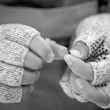








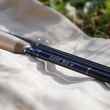
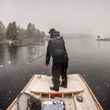



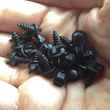
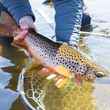



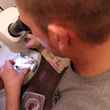
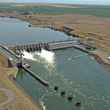
Comments
Matt replied on Permalink
These Hatch articles are gold.
Pages